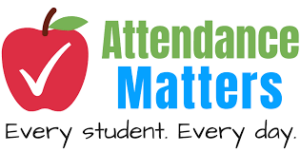April 1st, 2016
Over the past few weeks John Howard Society has been giving presentations called
ONE BY ONE WE GET ALONG to all of our primary students about problem solving and getting along. Please check out their Facebook page to see key messages and topics.
-Key Concepts and Language
JOHN HOWARD SOCIETY
ANTIBULLYING PROGRAMS
PHASE I
ONE BY ONE WE GET ALONG (Grades K-3):
SESSION 1: INTRODUCTION
BULLYBUG *song introduced to children as an emotional/behavioural management tool
– Fictitious germ which goes into your ear and whispers bad/hurtful choices.
Buddybug
– Fictitious germ which goes into your ear and whispers good/respectful choices.
SESSION 2: PASSIVE, AGGRESSIVE and ASSERTIVE CHOICES
FRED THE RED (RED CHOICES)
– Choices that make you happy but make someone else sad (aggressive choices)
SUE THE BLUE (BLUE CHOICES)
– Choices that make the other person happy but make you sad (passive choices)
HELLO YELLOW (YELLOW CHOICES)
– Choices that make both people happy
YELLOW VOICE, RED VOICE or BLUE VOICE
– The tone/word choice you use
MAGIC STOP
“I DON’T LIKE WHAT YOU’RE DOING. PLEASE STOP”
– The special way to say stop like Hello Yellow when someone is doing something that is bothering you.
SESSION 3: PROBLEM SOLVING
(Kindergarten)
HAPPY/HAPPY PROBLEM SOLVING
– Finding a solution to a problem which satisfies both sides
(GRADES 1 through 3)
WITS – Four possible responses to social aggression
W-Walk Away
I – Ignore it
T – Talk it out (1 to 1)
S – Seek Help
(Alternate) A.B.C.D PROBLEM SOLVING
– The four step process to solving a problem
A- Ask if there is a problem and what it is (Don’t assume or guess)
B – Brainstorm a lot of different ways to solve the problem
C – Choose the solution that will make both people happy
D – Do whatever you have chosen
SESSION 4: GOAL SETTING AND ACCEPTANCE
LAUGHING AT versus LAUGHING WITH
MISS-TAKE
– a chance to try again, a learning experience
T-R-Y (Rhyme taught to students which combines several learning styles – musical, bodily kinesthetic, verbal/linguistic)
SESSION 5: REPORTING TO A TEACHER
TATTLE VS. TELL
– The difference between telling to get someone into or out of trouble
THE 2D RULE
– If there is damage or danger, students should tell a teacher right away
DANGER
– When “someone” is getting hurt
DAMAGE
– When “something” is getting ‘hurt’ (damaged, destroyed or broken) and it would be a ‘hard’ fix or cost a lot of money.
RHYMES/SAYINGS TO CUE PRIMARY PROGRAM OUTCOMES
“Check your choices.”
– used to encourage students to self-evaluate and determine whether their choices are positive or negative.
“Make a yellow choice. Use your yellow voice.”
– Used to cue students to model assertive behavior in both their actions and words.
“Don’t just call a friendship quits. If something goes wrong, use your WITS.”
– Cues students to apply the WITS strategies (listed above in Session 4) to a social problem
“When things get rough and things get tough and you feel like you have had enough, don’t just quit. Remember to T.R.Y.”
- Reminds students that we are not perfect and things will go wrong but we need to respond to these problems in a way that solves them.“I know you know it. Now it’s time to show it.”
- Encourages students to apply the information they have learned from the program.

 ESNS Elementary School Nutrition Services
ESNS Elementary School Nutrition Services